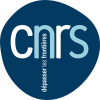RISC-UV
This projet has been completed in December 2009.
The constant increase in the number of skin cancers is ascribed to longer and/or more intense exposure to the sun, to the fashion of sunbathing and to greater life expectancy. What is the role played by the alteration in intensity of UV radiation at the Earth's surface resulting from variation in several factors affected by climate change and human activities: stratospheric ozone, cloud cover, aerosols and the reflectivity of the surface (albedo)? This is the goal of the RISC-UV project, in which geophysicists and pathologists will work together to assess the relative role played by behavioral and environmental factors in the increase of skin cancers. RISC-UV is organized around three main areas:
• Organization of a conference whose aim is to describe the state of the art in the subject within each community and define the requirements of pathologists for epidemiological studies;
• Pilot study intended to evaluate the consistency between UV measurements delivered simultaneously by satellite-based instruments, ground instruments, radiometers and individual dosimeters;
• Quantification of the relative role played by human, behavioral and environmental factors in the origin of skin cancers.
Context
Exposure to ultraviolet radiation can be either beneficial or harmful, depending on the dose received. For example, a brief daily exposure (10 to 15 minutes) is essential in order to encourage synthesis of vitamin D, a hormone that plays a role in regulating calcium metabolism. Also, certain skin diseases are treated by controlled exposure to UVA and UVB radiation. Overexposure to UV radiation, on the other hand, can cause numerous health problems involving the eyes (cataracts, keratitis and macular degeneration) and skin (sunburn, premature aging, photocarcinogenesis and immunosuppression). Photocarcinogenesis of the skin leads to two types of cancer:
• Melanoma: caused by intermittent exposure to ultraviolet radiation; the advanced stages of this cancer are very difficult to treat. The rate of incidence among fair-skinned populations world-wide is doubling every 10 years.
• Skin carcinoma: caused by chronic exposure to UV radiation; this group of cancers are rarely fatal but leave disfiguring scars when surgically removed. The incidence of carcinomas is also rising.
There are several potential causes for the increase in these cancers:
• Changes in human behaviour, resulting in longer and/or more intensive exposure (e.g. more frequent holidays in sunny locations and a fashion culture that values a tanned appearance);
• Longer life expectancy;
• Changes in the intensity of the ultraviolet radiation reaching the earth's surface as a result of disruption to environmental parameters (e.g. stratospheric ozone, cloud cover, aerosols and reflectivity) due to climate change or human activity.
Relatively few epidemiological studies into these possible causes have been conducted.
Objectives
Based on these observations, the RISC-UV project aims to determine whether there is a link between the observed increase in skin cancer incidence rates and the variation in UV radiation caused by chemical changes in the atmosphere, and to assess the relative weights of behavioural and environmental factors in this rise in skin cancer. The project relies on scientific collaboration between a medical community concerned by health problems associated with exposure to ultraviolet radiation (i.e. dermatologists, oncologists and epidemiologists) and atmospheric physicists studying variations in solar radiation at the earth's surface prompted by environmental changes.
 |
 Mélanome de la peau Evolution de l'incidence et de la mortalité en France (1980-2005) Mélanome de la peau Evolution de l'incidence et de la mortalité en France (1980-2005) |
Methodology
Part 1: Organization of a conference with the aim of describing the state of the art in each community concerned by this issue and defining additional joint projects
During the conference, which is scheduled for November 2008, experts will speak on the state of the art in the following areas:
• UV radiation measurement techniques and artefacts;
• Epidemiological models relating to UV exposure;
• Research into social behaviour with regard to UV exposure;
• Modelling variations in ultraviolet radiation caused by climate change and related skin cancer risks.
Discussions arising out of this conference may lead to the setting-up of further joint projects at national or European level.
Part 2: Measurement of ultraviolet radiation and related studies
1) Measurement campaign for UV radiation and associated parameters
An experimental campaign will be conducted at SIRTA from 8th September to 8th October 2008. The purpose of this campaign is to obtain, analyze and quantitatively link the UV radiation data obtained at various spatial scales (satellite, ground-based and spot measurements) by a variety of measuring systems:
Satellite measurements: TOMS and OMI sensors
Spot measurements: Various types of dosimeter (UV patch, UV bracelet, UV-strip) |
The aim of the campaign is to evaluate the consistency of the measurements obtained simultaneously by satellite instruments, ground-based measuring instruments and individual dosimeters. The following studies will be carried out to this end:
• Analysis of erythematous doses and UV-A radiation measured by the UV-E and UV-A pyranometer in a variety of situations (solar zenith angle, ozone and aerosol concentrations and cloud cover), and comparison with the measurements obtained by the UV spectroradiometer and satellite observations (with scale conversion).
• Analysis of individual dosimeter measurements and comparison with the estimated erythematous doses obtained by UV pyranometry and satellite observations.

 Pyranomètre UV
Pyranomètre UV Dosimètre individuel
Dosimètre individuel
2) Analysis of the long-term consistency of data series relating to UV radiation and related parameters
• Literature study for the purpose of producing an assessment of the numerous confirmations of satellite measurements by ground-based instruments;
• Study based on measurements made by LOA and the Observatoire de Haute Provence, with the aim of producing a long-term assessment of the influence of aerosols, cloud cover and the total ozone column on the surface ultraviolet radiation values measured by satellite and ground-based instruments.
Part 3: Analysis of the medical, behavioural and environmental parameters involved in skin carcinogenesis
Although most of the factors involved in the skin cancer development have now been identified, the relative weights of the medical, behavioural and environmental parameters are still poorly understood. This issue will be addressed in a two-stage approach:
• A literature study using a meta-analysis technique to identify and determine the relative weights of human parameters (i.e. medical, demographic and behavioural characteristics) on the risk of developing skin cancer. In addition to the general population, this study will consider populations at higher risk of developing skin cancers, such as recipients of organ transplants and patients infected with HIV.
• In the second stage of the programme, UV exposure and temperature variations between regions and over time will be incorporated into the human risk factors identified by the literature-based analysis. This research will be carried out on retrospective patient cohorts (melanoma cohort, cohorts of transplant recipients with and without carcinomas, etc.).
It will then be possible to obtain a fairly precise estimate of the relative weights of the human, behavioural and environmental factors in skin carcinogenesis. This information should in turn allow the development of prognostic epidemiological models to represent changes in skin cancer rates according to future changes to the various parameters.
Research tools (networks, infrastructures, services...)
• COST 726 by the European Commission: "Long term changes and climatology of UV radiation over Europe": joint European programme to develop coordinated European UV radiation climatology.
• NDACC (Network for the detection of atmospheric composition change): This international network of more than 70 remote detection stations is used by scientists to observe and better understand the physical and chemical state of the stratosphere and upper troposphere, and to assess how changes occurring in the stratosphere affect the troposphere and the global climate.
• SoDa (Services for solar energy and radiation professionals): the purpose of the SoDa service is to satisfy the need for information on solar energy and radiation for a variety of uses, including research into solar power systems, energy efficiency of buildings, the environment, climatology, global change, human health, air quality, ocean, water (reservoirs and eutrophication), primary production, vegetation, agriculture, forestry, horticulture, material aging, etc. It provides a single point of entry to a range of information relating to solar radiation and its applications.
Research projects
• SCOUT-O3 (Stratospheric-Climate Links with Emphasis on the Upper Troposphere and Lower Stratosphere), an integrated European project that aims to make predictions regarding the evolution of the chemistry/climate coupled system, and in particular, changes to the ozone in the lower stratosphere and the impacts of those changes on the climate and ultraviolet radiation. One of the project's eight scientific activities sets out to describe the impacts of ozone, aerosols and clouds on surface UV radiation.
Reports/publications
• Ozone layer - climate change interactions. Influence on UV levels and UV related effects
Global Change NOP-NRP report 410200112
• Rayonnements ultraviolets - État des connaissances sur l'exposition et les risques sanitaires (Ultraviolet radiation - State of knowledge regarding exposure and health risks) AFSSE report, June 2005 (in French)
Websites
• Soleil, Terre et UV : website of the French "Sun Safety" association
TOMS sensor: The Total Ozone Mapping Spectrometer (TOMS) sensor provides measurements that scientists can use to accurately estimate the amount of UV-B (290 to 320 nm) radiation reaching the earth's surface. The TOMS satellite, which passes the equator on a polar orbit every day at noon, local time, is used to measure the total quantity of ozone present in a column of the atmosphere, and to measure cloud cover all over the planet. Ozone and clouds absorb most of the ultraviolet radiation that passes through the atmosphere. The TOMS sensor also measures the quantity of solar radiation reflected by the upper layers of the atmosphere. Combining these three measurements will enable scientists to accurately estimate the quantity of UV radiation reaching the earth's surface.
Total ozone column: Quantity of ozone contained in a column reaching from the measuring instrument to the outer edge of the atmosphere.
Erythematous dose: Ultraviolet radiation received at ground level, weighted by the erythema action spectrum. The spectrum of action varies according to the wavelength; the erythematous dose quantifies the skin's sensitivity to the onset of sunburn (erythema).
Meta-analysis: Analytical technique consisting in assembling the results of several studies conducted separately on a particular topic.
|
Coordination
|
Sophie GODIN-BEEKMANN Research Scientist, Service d'Aéronomie, Institut Pierre Simon Laplace Sophie.Godin @ aero.jussieu.fr |
|
Remote sensing of atmosphere
|
Martial HAEFFELIN Research Engineer, LMD Martial_haeffelin @ lmd.polytechnique.fr |
|
Cutanaous cancers
|
Philippe SAIAG Dermatologist Philippe.Saiag @ apr.aphp.fr |







